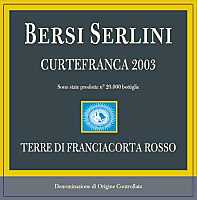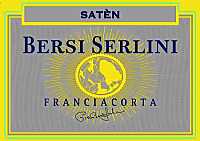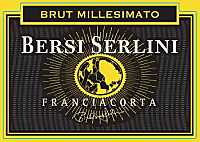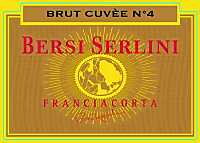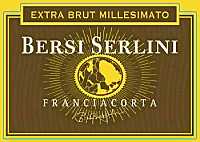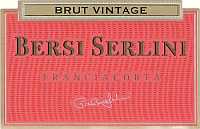|
The quality of Italian wine has shown, in the last thirty years, important
changes which can be considered as a revolution. Production methods, cultural
practices and commercial strategies based on quality, have drastically changed
the world of wine in Italy and its consumption as well. The merit goes to the
many obstinate and tenacious producers who believed in the richness of the
heritage found in their lands, convinced that from their vineyards could born
wines with excellent quality, as to be compared, with no fear, to the ones
considered as wines par excellence. A fundamental contribution to this
change must be recognized - with no doubt - to Franciacorta, today one of the
most refined producers of bubbles in the world, as to compete, and frequently
win, the comparison with the production of the other countries in the world.
The history of Franciacorta is extraordinary: in just about 30 years it was
capable of becoming one of the most important producers of bubbles in the world,
the first Italian classic method sparkling wine to reach the status of
Denominazione d'Origine Controllata e Garantita (Denomination of
Controlled and Guaranteed Origin, DOCG).
|
| 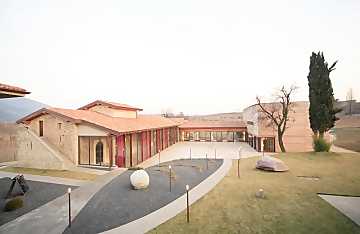 |
| The court of Bersi Serlini winery |
|
It was 1967 when the wines of Franciacorta obtained the Denominazione
d'Origine Controllata status (Denomination of Controlled Origin, DOC), a goal
which will lead, after about thirty years - in 1995 - to the Denominazione
d'Origine Controllata e Garantita status (DOCG) for the prestigious bubbles of
this land. An important role towards this goal was certainly played by Bersi
Serlini that, among the other things, was the first winery to produce in 1970
Franciacorta Brut. The story of Bersi Serlini winery begins in 1886, when the
family acquired a property situated in “Cerreto” place, an ancient site
belonging to the monks of Cluny. A site rich in history and with a deep
connection with the vine and wine. The first document mentioning the presence of
the vine at “Cerreto” is dated back to 1489, in a parchment concerning the
census in the lands of the Monastery of Saint Peter in Lamosa at Provaglio
d'Iseo. “Cerreto” will change its property many times in the course of its
history, up to 1765, when it will pass under the control of private subjects and
to the control of many families, until 1886, when it was finally acquired by the
Bersi Serlini family.
The headquarter of Bersi Serlini is located in a farmhouse of the monastery -
dated back to 1400s and used in the past to accommodate the rooms of monks -
subsequently widen around the half of 1900s by lawyer Piero Bersi Serlini. Here,
in 1970, under the supervision of the son Arturo, will be produced the first
bottle of Franciacorta Brut. After more than 35 years, Bersi Serlini - which
recently increased the range of its products with the prestigious Franciacorta
Brut Vintage 2000 - represents still today one of the most important wineries in
Franciacorta. The management is today led by Maddalena Bersi Serlini - who is
also the regional president of “Donne del Vino” association in Lombardy (Women
of wine) - and her sister Chiara Bersi Serlini. For little more than one year,
Bersi Serlini also takes advantage of the competence of Ms. Antonietta
Zandomeneghi, a marketing expert, who after having worked with many wineries in
north Italy, she is now in charge of communication strategies, commercial
management and marketing.
|
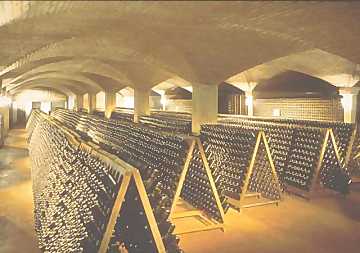 | |
| Bersi Serlini's Franciacorta in pupitres | |
|
Bersi Serlini family is in the wine business for more than one hundred years, by
cultivating with passion and commitment the thirty hectares destined to
vineyards. Bersi Serlini's vineyards take advantage of a good aeration and the
soil is composed by a thick layer of limestone, a part of clay and silt,
softened by an abundant layer of sands of alluvial origins. The composition of
the soil is such to give the wines characters of finesse and elegance,
expressions of Provaglio and Timoline territories. Also the microclimate found
in the vineyards in pretty favorable: twelve hours of daily aeration which
regularly happen in summertime, from 10PM to 10AM, a mild and cool climate ideal
for the cultivation of the vine. Vineyards are cultivated by following the
principles of Eco Environmental Culture, with a limited use of treatments
and therefore a better respect for the environment.
The thirty hectares of vineyards and property of Bersi Serlini, are mainly
cultivated with Chardonnay and Pinot Blanc varieties, a small part is destined
to Pinot Noir, whereas about three hectares are destined to the cultivation of
Cabernet Franc and Cabernet Sauvignon. The cultivation of vineyards is
supervised by agronomist Dr. Pierluigi Villa, by following criteria of a large
number of plants per hectare and a lesser quantity of grapes produced for each
vine, therefore obtaining a fundamental presupposition for quality. The
harvesting is strictly done by hand and the grapes are transported to the cellar
and crushed within one hour. The harvesting and the crushing of grapes are done
separately for each vineyard. The cellar is supervised by wine maker Corrado
Cugnasco and by cellar master Luca Ferrari. The crushing of grapes is done by
applying a light force and from about 100 kilograms of grapes are obtained about
60-70 liters of must. The vinification cellar is equipped with thermo-controlled
stainless steel tanks, therefore allowing the separate vinification of each
vineyard.
In one or two tanks is in fact kept the must of each vineyard, in order to allow
a better control over the organoleptic qualities of each wine which will then
become the cuvée of Bersi Serlini's Franciacorta. When base wines have
reached the right time of aging, Bersi Serlini family, together with its
technical staff, begins the tasting of each tanks, therefore making the
different cuvée. Every cuvée, according to their organoleptic
qualities, will be then used for the creation of the many Franciacorta styles.
The base wine is then bottled - after having added natural yeasts and cane sugar
- in order to start the refermentation process: the first step towards the
creation of the elegant Franciacorta bubbles. Bottles are then kept in the cool
underground cellars dated back to 1400s, at eight meters deep with a constant
temperature from 13° to 15° C, where they will be allowed to age for many years.
At the end of aging, the bottles undergo the remuage process, done by
hand, followed by disgorgement, that at Bersi Serlini is done for six or seven
times per year, producing each time about 25,000 bottles.
|


